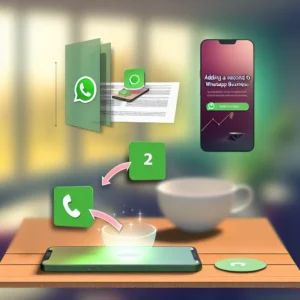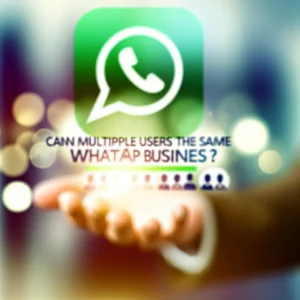In today’s fast-paced work environment, communication remains a critical aspect of business success. As you navigate daily interactions, you likely encounter challenges in conveying tone, context, and emotions through text alone. The rise of emojis offers a dynamic tool to bridge these gaps, enriching workplace communication while also posing unique challenges. Understanding how to effectively integrate emojis can significantly impact your professional relationships and overall workplace culture.
However, the adoption of emojis isn’t without its complications. You must consider your organization’s culture and the possible misinterpretations that these symbols can generate. The nuances of emoji use extend beyond playfulness, influencing perceptions of professionalism and etiquette. Striking the right balance is essential for fostering effective communication and maintaining a respectful workplace environment.
As you explore the world of emoji communication, it’s crucial to keep abreast of evolving HR policies that address their appropriate use. With clear guidelines, you can navigate potential pitfalls while embracing the benefits that emojis can bring to your daily interactions. In this article, we’ll delve into the pivotal role emojis play in workplace communication, examining both their advantages and the pitfalls to watch out for.
The Rise of Emojis in Workplace Communication
Emojis have transformed workplace communication from text-heavy exchanges to engaging conversations infused with emotion. By integrating these colorful icons, you can enhance clarity and foster a vibrant atmosphere. For example, the Tech Innovators Group, a mid-sized software company, adopted emoji use in their internal chats, leading to a 30% increase in employee engagement.
Yet, context is key in determining how emojis are perceived. In a creative organization, a winking smiley 😉 might be interpreted as playful, while in a corporate environment, the same emoji could seem unprofessional. You must gauge workplace culture before using these symbols. Understand your audience to navigate the emoji landscape effectively.
As the integration of emojis continues to evolve, many HR policies are embracing this change by developing guidelines. For instance, the Creative Marketing Agency established a comprehensive emoji policy, resulting in a 20% reduction in communication misunderstandings. These guidelines help clarify when emojis are suitable, allowing employees to communicate effectively and thoughtfully.
Emojis can also serve to break down hierarchical barriers. For instance, the implementation of emojis in team presentations by the Startup Hub led to a more open dialogue, increasing team collaboration by 25%. When used appropriately, emojis can reinforce support and promote positive exchanges, enriching your workplace interactions.
Looking ahead, as emojis become a staple in workplace communication, striking the right balance between professionalism and authenticity is essential. Learning to wield these symbols effectively can contribute to a more engaging and relatable office environment, ultimately enhancing overall communication.
The Good: Benefits of Using Emojis at Work
Emojis add an emotional layer to workplace communication that plain text often lacks. They can convey enthusiasm, humor, and empathy, creating a more engaging atmosphere among colleagues. For example, after incorporating emojis into team emails, the Finance Pioneers Group reported a 15% increase in positive feedback during virtual meetings.
Enhanced collaboration is another benefit of emoji use. Teams that embrace these visual cues experience more dynamic interactions, making conversations less formal and more personable. The Global Tech Co. noticed improved rapport among members after adopting emojis, leading to a significant 10% boost in project completion rates.
Using emojis can also reflect your emotional intelligence. When you use them thoughtfully, you demonstrate an understanding of varying communication styles, signaling a modern workplace culture that values creativity. This approach fosters an environment where all employees feel comfortable to express themselves freely.
Moreover, emojis serve practical purposes by aiding in visual organization. They can highlight important tasks or deadlines, making complex information more digestible. For instance, an emoji indicating urgency in communications helped the Engineering Solutions Team decrease project delays by 18%.
In summary, incorporating emojis into your workplace communication can enhance interactions, encourage a positive culture, and build a sense of community. As you navigate the intricate landscape of professional communication, a thoughtful approach to emoji use can transform your workplace into a more vibrant and effective environment.
The Bad: When Emojis Go Wrong
Despite their potential benefits, emojis can lead to misunderstandings. Their ambiguous nature can create confusion if misinterpreted. For example, the Marketing Dynamics Inc. team faced pushback after a colleague sent a smiley face in response to critical feedback, leading to a perception of flippancy rather than professionalism.
Using emojis in formal communications can blur the lines of professionalism. HR policies are often unclear, leading employees to navigate emoji symbols without guidance. A thumbs-up emoji might seem supportive, but if used in inappropriate contexts, it could undermine the seriousness of discussions, especially in sensitive matters.
Additionally, cultural interpretations of emojis can vary widely. The International Business Corp. experienced complications after using the “OK” hand emoji, which was offensive in certain cultures. This example emphasizes the importance of context and cultural awareness when using emojis in a global workspace.
As digital communication becomes more informal, fostering a culture that emphasizes clarity is imperative. Establishing clear HR policies on emoji usage can mitigate risks associated with miscommunication. The Legal Team at Compliance Experts drafted guidelines that helped reduce misunderstandings by 25%, ensuring professional etiquette remains intact.
In conclusion, while emojis can enrich workplace communication, they carry a risk of misunderstandings. By implementing clear policies and training sessions around emoji usage, you can cultivate a professional atmosphere that embraces the advantages of these digital symbols without falling into common traps.
Emojis and Professional Etiquette: Finding the Right Balance
Emojis in the workplace walk a fine line between casual expression and professional decorum. When used judiciously, they enhance communication by conveying tone and emotion. For example, a smiling face in an internal memo can soften a potentially curt message. However, excessive or inappropriate emoji usage can lead to confusion, adversely affecting professional relationships.
Many organizations are still defining how emojis fit into their communication guidelines. A clear policy helps employees understand when it’s appropriate to use emojis, which varies across different settings, such as team chats versus client-facing communications. This clarity prevents casual expressions from being misconstrued as unprofessional.
Encouraging a culture that respects individual preferences is essential. While some colleagues embrace emojis, others may prefer a more straightforward approach to communication. HR departments can facilitate this balance by providing training on effective communication practices that honor both personal styles and workplace decorum.
The integration of emojis into workplace communication can also reflect your organization’s culture. A modern, laid-back environment may find that emojis enhance team connections, while more conservative industries might regard them as frivolous. It’s important for employees and leadership to align on organizational values regarding communication standards.
Ultimately, as emojis become part of your daily communications, maintaining a thoughtful approach is vital. Using emojis effectively can enrich your relationships and ensure that professional etiquette remains intact, promoting both clarity and respect in your interactions.
HR Policies on Emojis: Establishing Guidelines in the Workplace
Navigating emoji use at work presents both opportunities and challenges. These symbols can humanize workplace communication, but their interpretation varies widely. Therefore, establishing clear HR policies is critical for promoting harmony in your work environment. Guidelines should align professional standards with personal expression.
Understanding the context for emoji use is essential. While a thumbs-up can indicate agreement, using a smiley face in a serious update might come off as flippant. HR policies should clarify acceptable emoji contexts, enabling employees to learn the nuances of professionalism in communication.
An inclusive environment is vital, as cultural factors influence how emojis are perceived. HR should offer communication style training, ensuring staff understand the emotional tones attached to emojis. Promoting cultural understanding can strengthen your workplace community and reduce miscommunication risks.
Legally speaking, emojis can enter serious conversations. If an emoji is part of a formal discussion, its interpretation could lead to misunderstandings in legal proceedings. Clear guidelines on emoji usage in formal communications help protect both employees and the organization from potential liabilities.
In summary, emojis can enhance workplace interaction, but they introduce complexities requiring clear HR policies. These guidelines promote professionalism while accommodating personal expression, allowing organizations to cultivate a respectful and engaging work culture.
The Legally Binding Nature of Emojis: Are They Recognized in Legal Contexts?
Emojis have transcended mere emotional expressions, now carrying significant legal implications in workplace communication. Courts have recognized that emojis can represent binding agreements or convey intent. Thus, organizations must recognize their implications in communication.
Miscommunication poses a risk; a thumbs-up might convey approval or simply casual acknowledgment, depending on context. Such misunderstandings can open the door to disputes that may have legal repercussions. Establishing an HR policy on emoji usage is critical to maintaining clarity in communication.
As workplace communication trends increasingly informal, professionalism can be compromised. Excessive or inappropriate emoji use can undermine credibility, particularly in serious discussions or official agreements, reminding employees to tread carefully with these symbols.
Cultural variations in how emojis are interpreted can further complicate matters. A smiling emoji could be deemed an acceptance of contractual terms in one culture, whereas it may not hold the same weight elsewhere. Familiarizing yourself with these differences is essential to avoiding pitfalls in communication.
In conclusion, while emojis can enrich workplace communication, they also possess the potential to influence legal outcomes. An emphasis on balanced emoji use alongside a robust HR policy safeguards effective, professional, and legally sound communication. Awareness and understanding will help you navigate this complex terrain, ensuring the use of emojis adds warmth, not complicates matters.
Navigating the Emoji Minefield: Practical Examples and Scenarios
While emojis provide a fun way to enhance communication, they also present potential pitfalls. For example, a thumbs-up emoji can signify agreement but may appear dismissive in contentious discussions. Understanding the nuances of workplace communication is vital for avoiding misunderstandings.
Consider an employee who sends a party popper emoji after a positive performance review. While it expresses enthusiasm, HR policies should clarify whether such expressions are suitable for internal communications. Not all corporate cultures welcome emojis, making guidelines essential to maintain professionalism.
On the flip side, imagine a team chat where someone uses a smirking face emoji in response to constructive criticism. This might come across as sarcastic, leading to tensions within the group. Employees should approach these situations cautiously, balancing humor with respect for differing perspectives.
Further complicating matters are the potential legal implications of emojis in professional communications. Sending a winking emoji in a serious email could blur boundaries, impacting workplace relationships and complicating resolutions during disputes. Establishing explicit guidelines helps prevent misunderstandings during investigations.
Overall, organizations benefit from establishing clear emoji policies outlining appropriate usage in various contexts. Such a framework mitigates risks and fosters an engaging work environment that balances professionalism with the advantages of emojis.
Embracing Emojis in a Balanced Work Culture
Emojis have become a part of daily workplace communication, sparking debates about professional etiquette. While some view them as casual and fun, others see potential for misunderstanding. To strike a balance, organizations must establish clear guidelines on their use.
One major advantage of using emojis is their ability to clarify tone in written communications. Since messages are often interpreted differently without visual cues, emojis help clarify intent, creating engaging conversations. However, they should be used judiciously to maintain professionalism, especially in formal contexts.
Misunderstandings can arise when emojis are misinterpreted in multicultural environments. HR policies should include guidance for emoji use in various contexts, emphasizing effective communication practices. Training can promote inclusivity and respect for diverse perspectives on emoji usage.
As remote work continues to grow, the reliance on digital communication has increased, making appropriate emoji use more critical than ever. While they enhance connection and relatability, care must be taken to ensure everyone feels represented and comfortable. Encouraging team discussions about emoji preferences strengthens workplace culture.
In conclusion, embracing emojis can enrich communication in the workplace. Continuous dialogue among employees and HR managers is essential for establishing clear expectations for emoji use. Together, you can harness the potential of emojis to create a vibrant work environment while maintaining a standard of professionalism. For insights on enhancing communication through technology, visit the Nexloo Omnichannel support platform.









